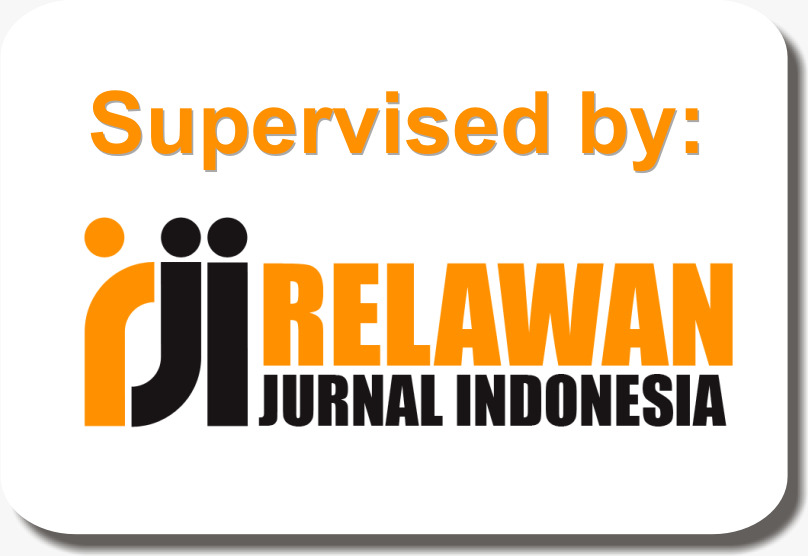PROYEKSI TRANSISI ENERGI NASIONAL MENUJU NET ZERO EMMISION MENGGUNAKAN ADAPTIVE NEURO FUZZY INFERENCE SYSTEM (ANFIS)
Abstract
Full Text:
PDFArticle Metrics :
References
H. Iswahyudi, “Back to oil: Indonesia economic growth after Asian financial crisis,” Economic Journal of Emerging Markets, vol. 8, no. 1, pp. 25–44, Apr. 2016, doi: 10.20885/ejem.vol8.iss1.art3.
“VI. THE OIL AND GAS SECTOR: PROSPECTS AND POLICY ISSUES 1.” [Online]. Available: http://www.imf.org/external/pubs/cat/longres.cfm?sk=17502.0.
S. Nugraha, “Ketahanan Energi Indonesia,” Sekretariat Dewan Energi Nasional, 2015.
“An Energy Sector Roadmap to Net Zero Emissions in Indonesia.” [Online]. Available: www.iea.org/t&c/
“Net-Zero Transition: Opportunities for Indonesia,” 2022.
A. Halimatussadiah, F. A. R. Afifi, R. E. G. Lufti, A. P. Pratama, and D. R. Wibowo, “Assessing Risks of Decarbonization Pathways in Indonesia,” Asian Economic Papers, vol. 23, no. 3, pp. 125–148, Oct. 2024, doi: 10.1162/asep_a_00912.
“Indonesias pathway to net zero 2060-PDF”.
S. Kusumadewi, Artificial Intelligence (Teknik dan Aplikasinya). Yogyakarta: Graha Ilmu, 2003.
Dewi and W. W. Himawati, “Prediksi Tingkat Pengangguran Menggunakan Adaptif Neuro Fuzzy Inference System ( ANFIS ),” Konfer-ensi Nasional Sistem & Informatika 2015, vol. 2015, no. 2004, pp. 9–10, 2015.
K. Papageorgiou, E. I. Papageorgiou, K. Poczeta, D. Bochtis, and G. Stamoulis, “Forecasting of Day-Ahead Natural Gas Consump-tion,” pp. 1–32, 2020.
M. H. L. Lee et al., “A Comparative Study of Forecasting Electricity Consumption Using Machine Learning Models,” Mathematics, vol. 10, no. 8, Apr. 2022, doi: 10.3390/math10081329.
A. K. Lohani, R. Kumar, and R. D. Singh, “Hydrological time series modeling: A comparison between adaptive neuro-fuzzy, neural network and autoregressive techniques,” J Hydrol (Amst), vol. 442–443, pp. 23–35, 2012, doi: https://doi.org/10.1016/j.jhydrol.2012.03.031.
M. H. L. Lee et al., “A Comparative Study of Forecasting Electricity Consumption Using Machine Learning Models,” Mathematics, vol. 10, no. 8, Apr. 2022, doi: 10.3390/math10081329.
BP, “Stratistical Review of World Energy,” Statistical Review of World Energy, vol. 67, pp. 1–56, 2014.
I. Haimi, Peramalan Beban Listrik Jangka Pendek dengan Menggunakan Metode ANFIS. UINSUSKA, 2010.
“anfis 93”.
T. Takagi and M. Sugeno, “Fuzzy identification of systems and its applications to modeling and control,” IEEE Trans Syst Man Cy-bern, vol. SMC-15, pp. 116–132, 1985, [Online]. Available: https://api.semanticscholar.org/CorpusID:3333100
J. S. R. Jang and C. T. Sun, “Neuro-Fuzzy Modeling and Control,” Proceedings of the IEEE, vol. 83, no. 3, pp. 378–406, 1995, doi: 10.1109/5.364486.
Y. K. Semero, J. Zhang, and D. Zheng, “EMD–PSO–ANFIS-based hybrid approach for short-term load forecasting in microgrids,” IET Generation, Transmission & Distribution, vol. 14, no. 3, pp. 470–475, Feb. 2020, doi: https://doi.org/10.1049/iet-gtd.2019.0869.
P. Vijayalakshmi, S. Buvaneswari, M. Harikumaran, A. Sasikala, S. Prabhu, and N. Jayanthi, “Comparative analysis of ANN and ANFIS models for solar energy prediction: Advancing forecasting accuracy in photovoltaic systems,” AIP Conf Proc, vol. 3231, no. 1, p. 040008, Nov. 2024, doi: 10.1063/5.0235865.
A. Andalib, M. Zare, and F. Atry, “A Fuzzy Expert System for Earthquake Prediction, Case Study: The Zagros Range,” 2009.
V. Ojha, A. Abraham, and V. Snášel, “Heuristic design of fuzzy inference systems: A review of three decades of research,” Eng Appl Artif Intell, vol. 85, pp. 845–864, Oct. 2019, doi: 10.1016/j.engappai.2019.08.010.
R. Fazel-Rezai, V. Asadpour, and M. R. Ravanfar, “Adaptive Network Fuzzy Inference Systems for Classification in a Brain Computer Interface,” in Brain-Computer Interface Systems - Recent Progress and Future Prospects, R. Fazel-Rezai, Ed., Rijeka: IntechOpen, 2013. doi: 10.5772/55989.
S. N. Z. Abidin and M. M. Jaffar, “Forecasting share prices of small size companies in Bursa Malaysia using geometric Brownian motion,” Applied Mathematics and Information Sciences, vol. 8, no. 1, pp. 107–112, 2014, doi: 10.12785/amis/080112.
I. Fitriana, Hadiyanto, B. Warsito, E. Hilmawan, and J. Santosa, “The Optimization of Power Generation Mix to Achieve Net Zero Emission Pathway in Indonesia without Specific Time Target,” International Journal of Sustainable Energy Planning and Manage-ment, vol. 41, pp. 5–19, Jun. 2024, doi: 10.54337/ijsepm.8263.
Hannah Ritchie, “CO₂ emissions dataset: our sources and methods” Published online at OurWorldinData.org. Retrieved from: ’https://ourworldindata.org/co2-dataset-sources.” Accessed: Sep. 01, 2025. [Online]. Available: https://ourworldindata.org/co2-dataset-sources
K. Handayani, Y. Krozer, and T. Filatova, “Trade-offs between electrification and climate change mitigation: An analysis of the Java-Bali power system in Indonesia,” Appl Energy, vol. 208, pp. 1020–1037, Dec. 2017, doi: 10.1016/j.apenergy.2017.09.048.
A. Putra Sisdwinugraha Anindita Hapsari Farid Wijaya Faris Adnan Padhilah His Muhammad Bintang Ilham Rizqian Fahreza Surya Julius Christian Adiatma, A. Halim Abyan Hilmy Akbar Bagaskara, A. Rosadi Agus Praditya Tampubolon Deon Arinaldo Erina Mursanti Fabby Tumiwa Malindo Wardana Marlistya Citraningrum, A. Putra Sisdwinugraha Anindita Hapsari, M. Jesica Solomasi Mendrofa Muhammad Dhifan Nabighdazweda Pintoko Aji Putra Maswan Raditya Yudha Wiranegara Rahmi Puspita Sari Shahnaz Nur Firdausi, and J. Tebet Timur Raya, “Imprint Indonesia Energy Transition Outlook 2025 Navigating Indonesia’s Energy Transition at the Crossroads: A Pivotal Moment for Redefining the Future,” vol. 5, p. 2025, [Online]. Available: www.iesr.or.id|iesr@iesr.or.id
J. Miller, J. Syahputri, D. Hall, A. Mahalana, and F. Posada, “Roadmap to zero The pace of Indonesia’s electric vehicle transition,” 2025.
S. Muhammad, X. Long, and M. Salman, “COVID-19 pandemic and environmental pollution: A blessing in disguise?,” Science of The Total Environment, vol. 728, p. 138820, 2020, doi: https://doi.org/10.1016/j.scitotenv.2020.138820.




